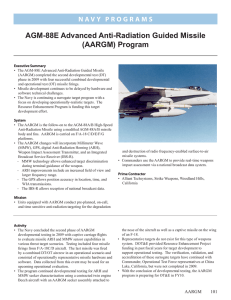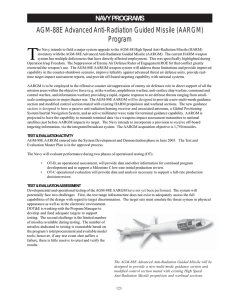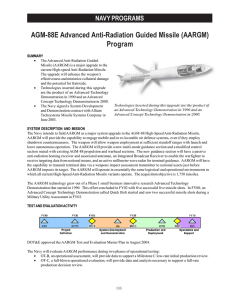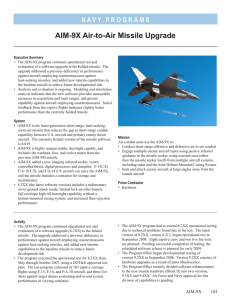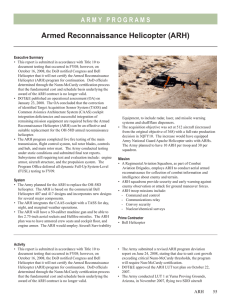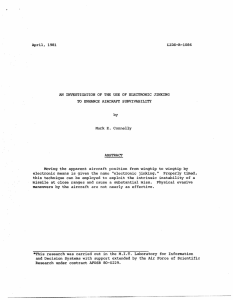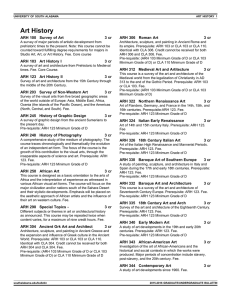AGM-88E Advanced Anti-Radiation Guided Missile (AARGM) Program
advertisement
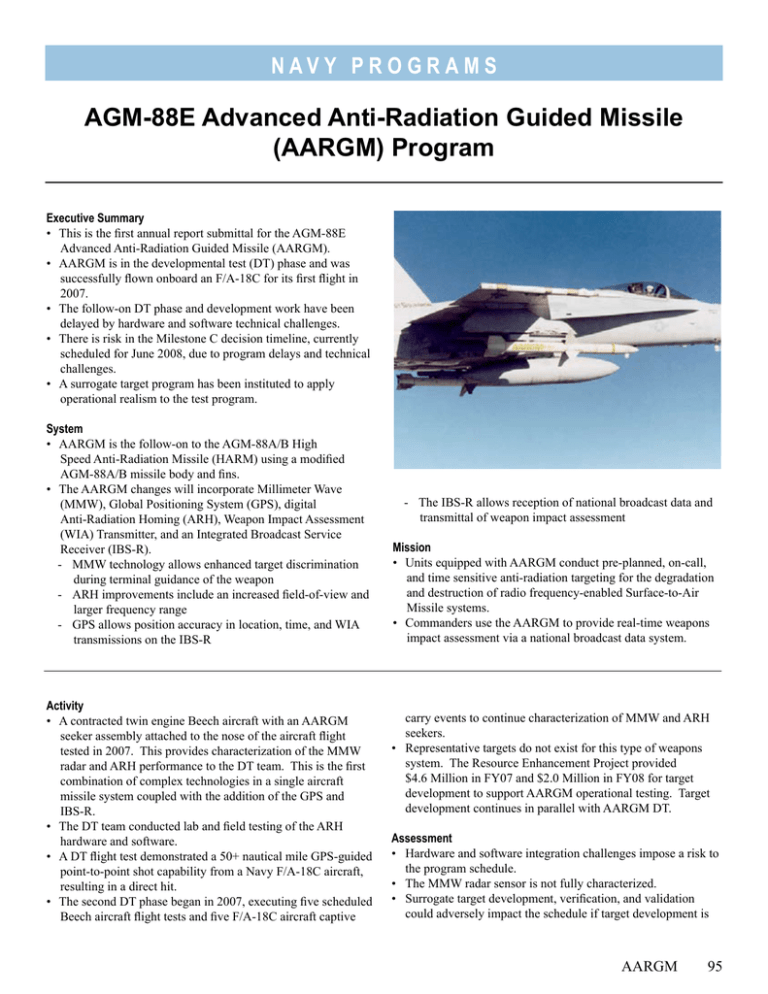
N av y P R O G R A M S AGM-88E Advanced Anti-Radiation Guided Missile (AARGM) Program Executive Summary • This is the first annual report submittal for the AGM-88E Advanced Anti-Radiation Guided Missile (AARGM). • AARGM is in the developmental test (DT) phase and was successfully flown onboard an F/A-18C for its first flight in 2007. • The follow-on DT phase and development work have been delayed by hardware and software technical challenges. • There is risk in the Milestone C decision timeline, currently scheduled for June 2008, due to program delays and technical challenges. • A surrogate target program has been instituted to apply operational realism to the test program. System • AARGM is the follow-on to the AGM-88A/B High Speed Anti-Radiation Missile (HARM) using a modified AGM‑88A/B missile body and fins. • The AARGM changes will incorporate Millimeter Wave (MMW), Global Positioning System (GPS), digital Anti‑Radiation Homing (ARH), Weapon Impact Assessment (WIA) Transmitter, and an Integrated Broadcast Service Receiver (IBS-R). - MMW technology allows enhanced target discrimination during terminal guidance of the weapon - ARH improvements include an increased field-of-view and larger frequency range - GPS allows position accuracy in location, time, and WIA transmissions on the IBS-R Activity • A contracted twin engine Beech aircraft with an AARGM seeker assembly attached to the nose of the aircraft flight tested in 2007. This provides characterization of the MMW radar and ARH performance to the DT team. This is the first combination of complex technologies in a single aircraft missile system coupled with the addition of the GPS and IBS-R. • The DT team conducted lab and field testing of the ARH hardware and software. • A DT flight test demonstrated a 50+ nautical mile GPS‑guided point-to-point shot capability from a Navy F/A-18C aircraft, resulting in a direct hit. • The second DT phase began in 2007, executing five scheduled Beech aircraft flight tests and five F/A-18C aircraft captive - The IBS-R allows reception of national broadcast data and transmittal of weapon impact assessment Mission • Units equipped with AARGM conduct pre-planned, on-call, and time sensitive anti-radiation targeting for the degradation and destruction of radio frequency-enabled Surface-to-Air Missile systems. • Commanders use the AARGM to provide real-time weapons impact assessment via a national broadcast data system. carry events to continue characterization of MMW and ARH seekers. • Representative targets do not exist for this type of weapons system. The Resource Enhancement Project provided $4.6 Million in FY07 and $2.0 Million in FY08 for target development to support AARGM operational testing. Target development continues in parallel with AARGM DT. Assessment • Hardware and software integration challenges impose a risk to the program schedule. • The MMW radar sensor is not fully characterized. • Surrogate target development, verification, and validation could adversely impact the schedule if target development is AARGM 95 N av y P R O G R A M S delayed. The target completion timeline possesses limited flexibility should technological challenges occur. • Pressure to maintain the Milestone C decision in June 2008 imposes risk to the scheduled operational assessment in 3QFY08. Recommendations • Status of Previous Recommendations. There are no FY06 recommendations as this is the first AARGM annual report. 96 AARGM • FY07 Recommendations. The Navy must: 1. Ensure the AARGM program is event driven and not schedule driven to ensure complete sensor characterization and missile integration. 2. Ensure surrogate target development, validation, and verification is accomplished for threat representative operational assessments and operational testing.
